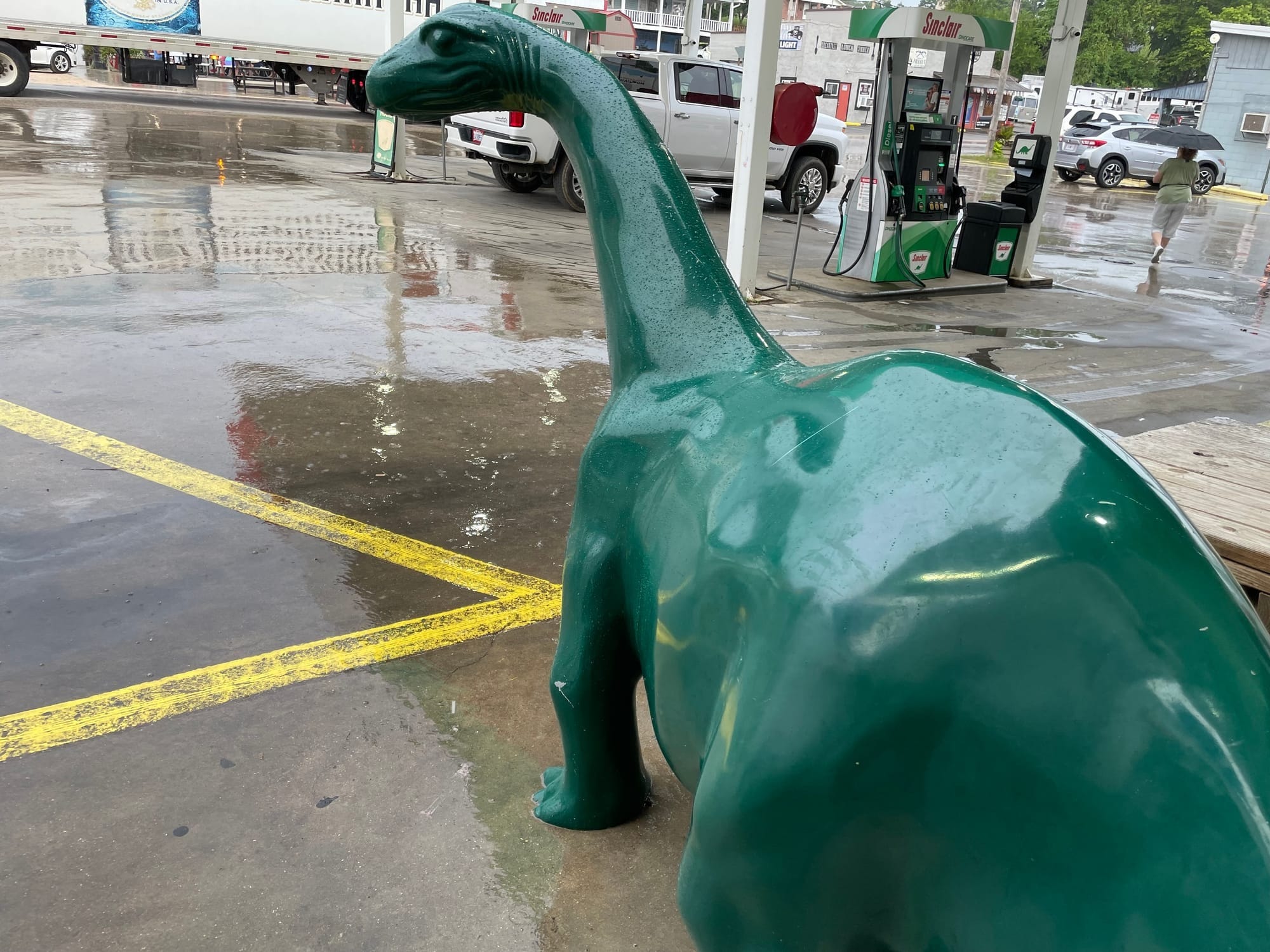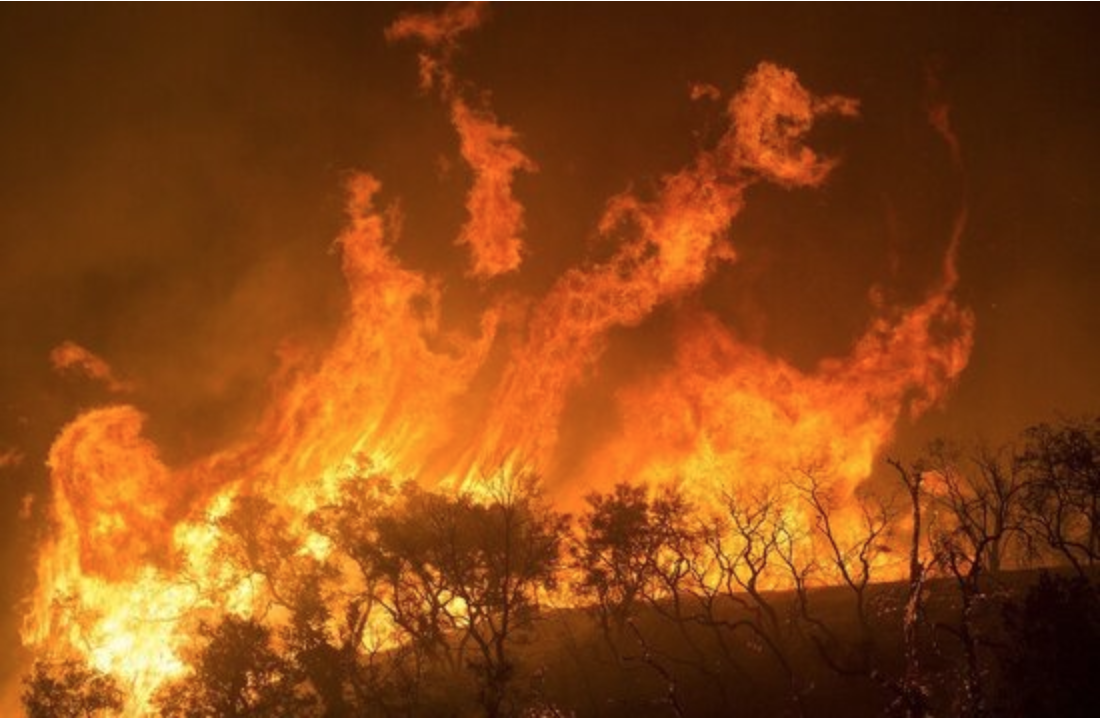A 100’ geyser is erupting in Texas. The cause isn’t some deeply buried supervolcano. It doesn’t signal some arcane geologic process. However, it is connected to a recent series of earthquakes. Those quakes and the unexpected geyser have the same cause: injection of wastewater left over from fracking.
The water spraying from the geyser isn't clean. It's laced with oil, gas, and the chemicals used when oil companies pump water into the ground to hydraulically fracture (frack) layers of sedimentary rock. It reeks of toxic sulfur dioxide, filling the air with the odor of rotten eggs.
How long it will last isn't known, but it's a good bet this jet of stink won't become as beloved as Old Faithful.
The stench geyser is just one of the treats that fracking has delivered to this area of Texas in the last few years. There are also zombie wells where polluted water is burbling from the mouths of old oil and gas boreholes that were supposedly sealed decades ago—except no one bothered to check. Now farmland is being ruined by toxic streams and vast amounts of methane are escaping into the atmosphere. Similar problems have occurred in other areas where there has been fracking.
Then there are the earthquakes. A surge of small earthquakes ranging up to a magnitude of 3.6 had earlier raised concerns about fracking in Oklahoma. But everything is bigger in Texas. There was a magnitude 5.0 quake in 2020, followed by a 5.4 quake in 2022 and a 5.3 quake in 2023.
These are not amusing little rumbles. They are serious quakes that can cause structural damage. Anywhere else in the nation, such events would raise huge alarms. The quake that sent people in New York City scrambling for cover earlier this year? That was a 4.8. Because the magnitude scale is exponential, the Texas quakes are many times more powerful. In fact, the recent series of fracking-related quakes are among the largest quakes ever recorded in Texas and could signal worse to come.
But all this isn't happening somewhere else. It's happening in the Permian Basin.
The name comes from thick deposits of sedimentary rock laid down during the Permian age, from about 300 to 250 million years ago—a time period right before the first dinosaurs whose conclusion was marked by an extinction event known as The Great Dying. Beds of this age range up to several thousand feet thick in this area of West Texas, and they are a major source of both oil and gas; one that has grown vastly in importance in the age of fracking. When it comes to oil, the basin outproduces all other oil fields in the lower 48 states combined and it accounts for almost a quarter of the nation's natural gas production.
The number of wells drilled each year varies with the price of oil and gas, but in 2024, the number of oil and gas wells drilled (around 450) was roughly equal to the number drilled everywhere else across the United States. Between 100 and 200 oil rigs are at work drilling holes in the Permian Basin at any given time.
Economically, the Permian Basin is hugely important. Jobs related to fossil fuels are a major employer in the area, and the fact that the United States is now a net oil exporter and jet set a record for the most oil ever produced by any nation in a single year, can be largely attributed to production from the Permian Basin.
There is even a University of Texas Permian Basin, marking out its significance to the state (and yes, it does offer an extensive geology program).
The first commercial wells were drilled in the basin over 100 years ago. In the 1960s, production in the area peaked at around 600 million barrels of oil per year, along with over 2 trillion cubic feet of natural gas. But the Basin, like many other oil fields, began to play out in the second half of the twentieth century and seemed on a slow decline ... until fracking.
Each one of the hundreds of new wells being drilled — along with hundreds of older wells being rejuvenated — requires the injection of a large amount of water mixed with fine-grained silica sand and often chemicals that act as detergents, breaking away crud and helping to ensure that pores and fractures are opened up for the passage of oil and gas.
When fracking is complete, all that polluted water has to go somewhere, and the solution has largely come in the form of injection wells, where the water is sent into porous rocks separated by (hopefully) many impermeable layers from aquifers used for humans and animals. That hasn't always proved to be the case. In 2012, the amount of polluted water pumped into the Earth was tagged at 30 trillion gallons. That was just in the first few years of widespread commercial fracking. It's safe to say that number is in the hundreds of trillions by now.
That 100' plume rising over Texas is a big signal that this fracking fluid doesn't always stay where drilling companies said it would.
The fluid doesn't just pose a threat to seep through cracks and voids into drinking water. It also serves as a lubricant for faults and fractures. That generates the earthquakes. Lots of smaller quakes in some areas. Bigger ones in West Texas.
In fact, despite the potential economic impact and the anything-goes attitude of the Republicans who run the state, Texas had already developed a plan for parts of the Permian Basin that would limit injection based on the number and magnitude of earthquakes in the immediate area.
Those plans don't have anything to say about geysers. Because no one was expecting a massive stench geyser.
Maybe they'll slow the expansion of drilling in the basin before this happens again. But this is Texas. Maybe they'll just bring in a few bears, throw up a sign or two, and call it a park.









Comments
We want Uncharted Blue to be a welcoming and progressive space.
Before commenting, make sure you've read our Community Guidelines.